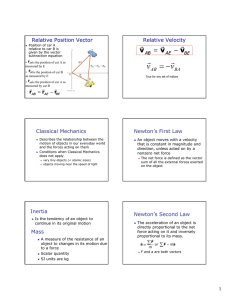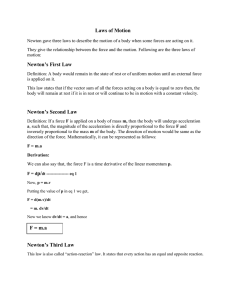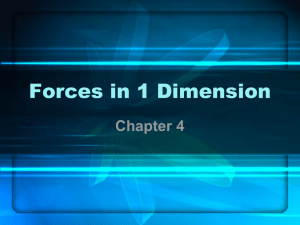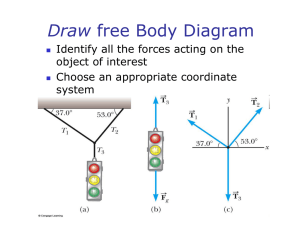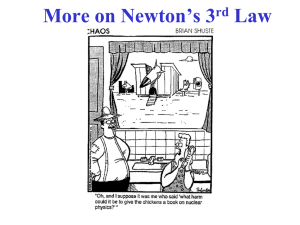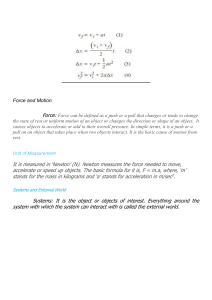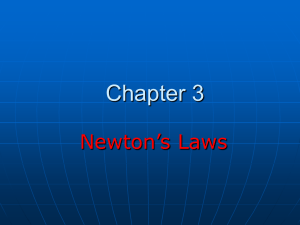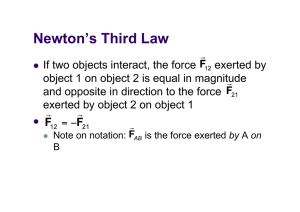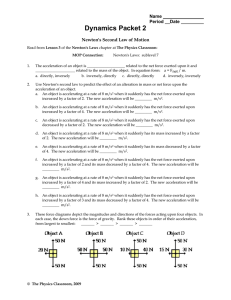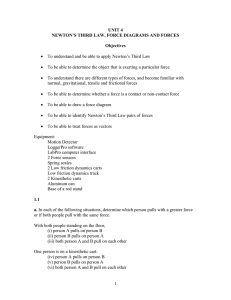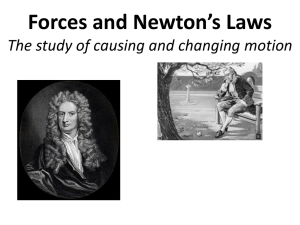Classical Mechanics Newton’s First Law An object moves with a velocity
advertisement
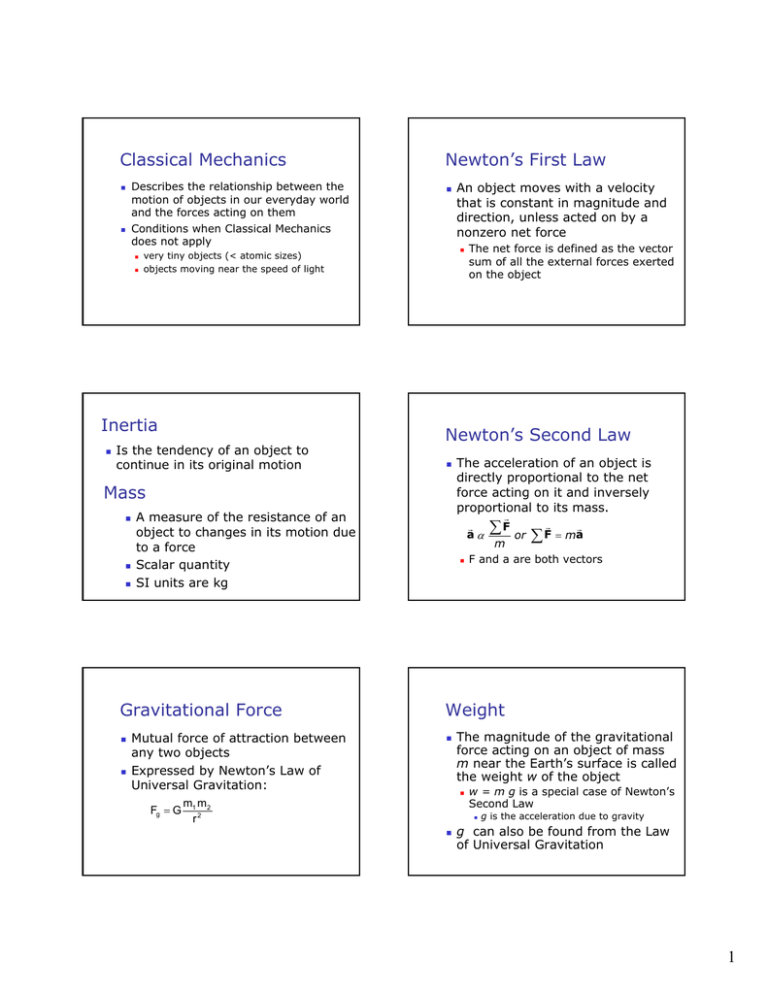
Classical Mechanics Describes the relationship between the motion of objects in our everyday world and the forces acting on them Conditions when Classical Mechanics does not apply Is the tendency of an object to continue in its original motion A measure of the resistance of an object to changes in its motion due to a force Scalar quantity SI units are kg Gravitational Force Mutual force of attraction between any two objects Expressed by Newton’s Law of Universal Gravitation: The net force is defined as the vector sum of all the external forces exerted on the object Newton’s Second Law Mass An object moves with a velocity that is constant in magnitude and direction, unless acted on by a nonzero net force very tiny objects (< atomic sizes) objects moving near the speed of light Inertia Newton’s First Law The acceleration of an object is directly proportional to the net force acting on it and inversely proportional to its mass. r aα r ∑ F or ∑ Fr = mar m F and a are both vectors Weight The magnitude of the gravitational force acting on an object of mass m near the Earth’s surface is called the weight w of the object m m Fg = G 1 2 2 r w = m g is a special case of Newton’s Second Law g is the acceleration due to gravity g can also be found from the Law of Universal Gravitation 1 Newton’s Third Law If object 1 and object 2 interact, the force exerted by object 1 on object 2 is equal in magnitude but opposite in direction to the force exerted by r r object 2 on object 1. F12 = −F21 The action and reaction forces act on different objects Equivalent to saying a single isolated force cannot exist Free Body Diagram Newton’s Third Law cont. Must identify all the forces acting on the object of interest Choose an appropriate coordinate system Equilibrium An object either at rest or moving with a constant velocity is said to be in equilibrium The net force acting on the object is zero (since the acceleration is zero) r ∑F = 0 Multiple Objects – Example Equilibrium cont. Easier to work with the equation in terms of its components: ∑F x = 0 and ∑F y =0 This could be extended to three dimensions When you have more than one object, the problem-solving strategy is applied to each object Draw free body diagrams for each object Apply Newton’s Laws to each object Solve the equations 2

